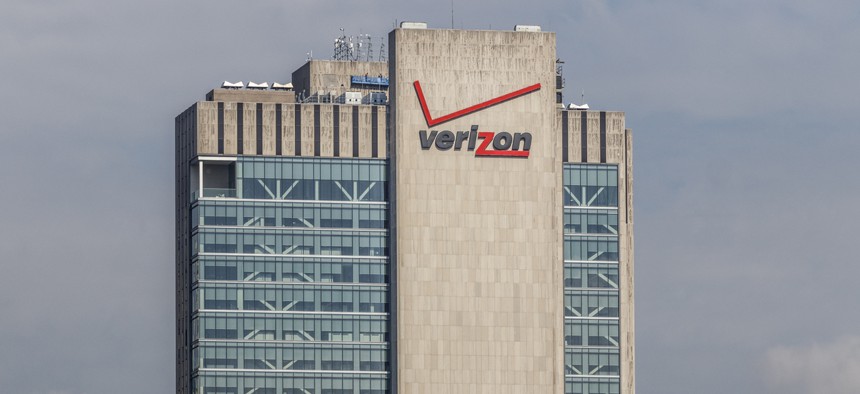Energy Department Awards Verizon $34.6M to Modernize its Communications Services

New York - Circa August 2019: The Verizon Building at 375 Pearl Street. jetcityimage/istockphoto
Two new Enterprise Infrastructure Solutions task orders will underpin the work.
The Energy Department selected Verizon Public Sector to boost its communications and information technology services across all of its existing hubs—and support any new ones formed in the future.
In an announcement published Wednesday, the telecommunications giant confirmed DOE awarded it two task orders worth a collective $34.6 million via the federal government’s Enterprise Infrastructure Solutions, or EIS contracting vehicle.
EIS was rolled out in 2017 as a replacement for the governmentwide Networx and Washington Interagency Telecommunications Systems, or WITS-3, contracts, which are expected to sunset in 2023. It’s designed to be a primary mechanism agencies can turn to for future-facing internet, telecommunications and other services. A major provider of such capabilities, Verizon was recently also awarded EIS deals from the Naval District Washington, Air National Guard and Labor Department.
These latest two task orders issued by DOE span two components: voice and data.
“The varying task orders will allow Verizon to provide service to all existing DOE locations as well as any future sites,” officials wrote in the release.
The award for data services will bring new and improved capabilities and enterprise IT services to the department’s headquarters facility in Washington, D.C. Through the contract, Verizon will also engage with “DOE Program Offices, Power Marketing Administrations, Plants, Site Offices, and National Laboratories with mission-specific services” across the continental U.S. and in DOE facilities located in England, Hawaii and Japan, the release noted.
And with the voice services-aligned task order, Verizon “will incorporate new technologies and services to help meet DOE’s next-generation voice requirements,” which include moving from its Time-Division Multiplexing platform to a more modern Internet Protocol Voice Service.
A Verizon spokesperson told Nextgov that the company is also helping “a number” of other federal entities transition from TDM to IPVS through EIS.
“It involves moving from a multiplexing technique that for decades has served as the underlying technology for voice transmission in public-switched networks to a more modern, efficient and cost effective method that uses Internet Protocol and sends voice signals via the internet,” the official explained. “It allows users to integrate their voice, video and data networks, enabling cost savings and providing features that TDM-based services cannot."
NEXT STORY: Senate inches closer to FedRAMP legislation






